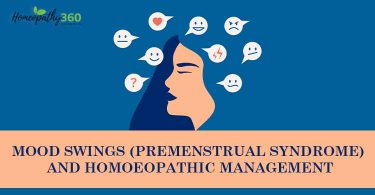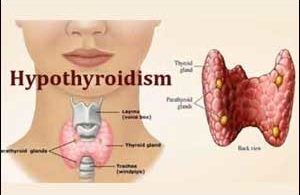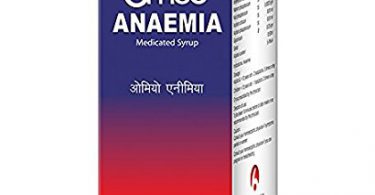Abstract: Mother tinctures are quite popular as treatment options for a homoeopathic physician nowadays as they have fast action and remain effective for a long time. In this article, some rare homoeopathic mother tinctures along with their pathological action are being explained.
Keywords- mother tincture, Balsamum Peruvianum, Dryopteris filix-mas.
Abbreviations- Mother Tinctures (T.M.), central nervous system (CNS), mother tincture (Q), decimal Hahnemannian (DH), decimal potency (x), carbon tetrachloride (CCl4), lactic acid dehydrogenase (LDH), Central Council for Research in Homoeopathy (CCRH), signal transducer and activator of transcription 3 (STAT3), nuclear factor kappa B (NF)-kB, platelet activating factors (PAF)
INTRODUCTION
Tinctures are defined as hydro-alcoholic tinctures, or “alcohols”, that is hydro-alcoholic solutions of dry, simple or compound medicinal plants, depending on whether they contain one or more drugs, obtained by simple maceration or percolation[1].
Mother tinctures (T.M.) are defined as solutions of phytocomplexes of fresh medicinal plants, in ethyl alcohol with different grades (from 60 ° to 80 °), reported in the French Pharmacopoeia. In the past, they were defined alcohol-based, i.e. alcoholic tinctures obtained from fresh plants by maceration or percolation,in which the ratio of drug / solvent is 1:10, with some exceptions, as in the case of marigold T.M. prepared at a ratio of 1:20, due to its high activity. The term “mother” is used because often these products constitute the starting point of homoeopathic preparations, obtained following successive dilutions (Hahnemannian dilutions)[1].
Homoeopathic pharmacopoeias fix the preparation methods. In many cases, the therapeutic active agents are extracted in alcohol-water mixture of varying percentage of alcohol as prescribed in the pharmacopoeia and required by law depending on the solubility, stability, and extractability of the ingredients. Such alcoholic preparation is called “mother tincture”.[2]
These contain active phytochemicals in case of plants, and complex organic entities in case of animals, many of these physiologically active chemicals are toxic in macro doses. Therefore, before its use, the toxicity aspects should be studied unless the materia medica recommends the use of mother tincture (or 1x)[2].
Microdilutions of mother tincture find wide applicability in homoeopathy. They are potentised preparation made according to a technique especially adopted in homoeopathic pharmacy[2].
Benefits of mother tinctures[2][3]
- Many mother tinctures are used homoeopathically as curative in drop-doses.[2]
- Homoeopathic mother tincture is the first stage in the preparation of a remedy dilution.[3]
- Used in preparing further dilutions and potencies.[3]
- A mother tincture contains the lowest possible potency of any particular homoeopathic preparation. Unlike crude drugs, the body easily accepts these extracts.[3]
- Mother tinctures have direct action unlike dilutions, which act by stimulating body’s own defence mechanism.[3]
- Used as a palliative-mother tincture is use to correct physiological and pathological dysfunction, or as a palliative in management ofacute cases by some experienced homoeopaths.[3]
- Mother tinctures are prepared with the aid of alcohol as it is readily absorbed in stomach and intestine. Action of the medicine starts within 3 to 4 minutes and remain for several hours.[3]
- Used as disinfectants-mother tinctures like Calendula officinalis and Cantharis vesicatoria are used as antiseptic in wounds and burns respectively, thus are called homoeopathic “disinfectants”.[3]
- Used in emergency or acute cases such as blood pressure, colic, dysmenorrhoea, etc.[3]
- Used as an external application, usually as an antiseptic.[3]
- Mother tincture is helpful in preparation of many homoeopathic tonics.[3]
Rare mother tinctures with their pathological action[2]
- ACORUS CALAMUS(other name – sweet flag): It is common in Manipur and Naga Hills. A homoeopathic tincture is made from rhizomes. It is mentioned in German Homoeopathic Pharmacopoeia. Traditionally, it is used in India for centuries as stimulant and aphrodisiac.
Action– in material doses, it is emetic, antispasmodic and carminative. Usefulin dysentery. The essential oil has remedial action in asthma. The drug has been recently studied in depth and finds application in dyspepsia, flatulence, loss of appetite, atonic and choleric, diarrhoea of children, and as anti-periodic in tertian fevers. There are reports of useful results in hysteria and neuralgia. Research reports indicate that alcoholic plant extract has sedative analgesic effects with moderate depression of blood pressure and respiration.
Recommended dose: Mother tincture in 10-20 drops thrice daily. Externally, it is used for lice.
- ADLUMIA FUNGOSA– the plant contains alkaloids, the D-adlumin and the adlumin of the group of phthalidiso-chinoleine alkaloids. The homoeopathic tincture is made from the aerial parts, which is imported. It is mentioned both in Homoeopathic Pharmacopoeia of India and German homoeopathic pharmacopoeia.
Action- it is used in cases of gout, migraine, dyspepsia with flatulence, gastro-duodenal ulcer, diaphragmatic hernia, rectitis and pruritis, hyperurecemia. It is also indicted for absentmindedness, irritability with diminished sexual desires with quick ejaculation. Literature also suggests its use in insomnia and early menses.
Recommended doses: 3x and higher. As per Julian, 6DH seems to be act better.
Recommended dose: Q/1x.
- BALSAMUM PERUVIANUM–
it is mentioned in Homoeopathic Pharmacopoeia of India. Lembke proved it first with repeated doses (15 to 30 drops) and introduced it into homoeopathy.
Action– its sphere of action is upon the mucous membrane of the respiratory tract, acting as an expectorant. It also possesses stimulating properties and lessens the secretions. Useful in bronchial catarrh with copious, purulent expectoration of muco-purulent material. According to Hale, cerate of the balsam is the best application next to glycerol of aloes for indolent ulcers, cracked nipples, cracks in fingers and palmer surfaces of hands or chapped lips. It is used locally as a stimulant over raw surfaces. Other indications include chronic catarrh of the bowels and bladder, debility, hectic fever, and even obstinate leucorrhoea.
Recommended dose: 15-30 drops of Q/1x. in hectic fever
- BOLDO-it is mentioned both in Homoeopathic Pharmacopoeia of India and German Homoeopathic Pharmacopoeia.
Action- it possesses diuretic and stimulant properties. It is a mild, urinary antiseptic. For atony of bladder cholecystitis, biliary calculus, loss of appetite with bitter taste, constipation, disturbed liver functions after malaria are also covered by this medicine. Recent studies have established its anti-inflammatory properties on acute inflammatory processes. Further, it has exerted a significant hepato-protection by reducing the lipid peroxidation and the enzymatic leakage of LDH. Its in-vitro efficacy was reinforced by a significant hepatoprotection on CCL4 induced hepatoxicity in mice.
Recommended dose: Q/1x for a few weeks.
- CARUM CARVI– it is made from nuts and is mentioned both in Homoeopathic Pharmacopeia of United States and German Homoeopathic Pharmacopoeia.
Action- it is anti-spasmodic and carminative in action, thus soothes digestive tract acting directly on intestinal muscles. It relieves colic, gripping pain, bloating and flatulence. It also improves appetite, acts as tonic and expectorant (more suitable to children). Its action on intestinal spasm and flatulence have been proven by research. In Indian medicine, it has a reputation of increasing breast milk production. Caraway oil externally is used for scabies. Carveol showed anti-asthmatic and anti-anaphylactic effects in guinea pigs.
As per reports, essential oils present in the plant possess anti-bacterial activity against pseudomonas.
Recommended dose: Q and 3x.
- CURCUMA LONGA (turmeric)- it is a very common household spice in India, knows as turmeric or haldi. It is a homoeopathic tincture made from the rhizomes, mentioned both in Homoeopathic Pharamacopoeia of United States and German Homoeopathic Pharmacopoeia. It was proved by Dr Arya, Dr Balachandra and Dr Augustine. Hahnemannian proving was conducted by CCRH and published in 2005 and 2008.
Action- it’s mother tincture is used as anti-inflammatory as well as externally to relieve pain and inflammation of arthritis as an antiseptic and an antioxidant. Research shows that it is a better antioxidant than vitamin E, lowers cholesterols, prevents risk of cancer and has anticoagulant action on blood, for cough, dyspnoea, and used as an antifungal, CNS depressant, and anti- rheumatic. Recent study has described its mode of action that it inhibits inflammatory nuclear factor (NF)-kB and NF-kB regulated gene products and induces death receptors leading to suppressed proliferation, induced chemosensitization, and suppressed osteoclastogenesis. Thus, it indicates that this drug can effectively block the proliferation of tumour cells through the suppression of NF-kB and STAT3 pathways.
Recommended dose: Q/1x and higher.
- DICTAMNUS ALBUS (burning bush)- it is made from bark of the root and rootless and is mentioned in Homoeopathic Pharmacopoeia of United States. It was introduced by Dr Stoerck, Dr Noack and Dr Trinks.
Action- It is generally used for stiffness in muscles and respiratory problems. In intermittent fever, nervous diseases and amenorrhoea are reported. Pharmacologically, it is antidote to venoms and acts as an anti-spasmodic. It has similarity to Ruta graveolens in action. Induces menstruation and relaxes the guts. Historically, used to stimulate uterine muscles, promote urine flow and ease the colicky pains of constipation.
Recommended dose: 3x and higher. Q/1x under strict medical supervision.
- EUGENIA CARYOPHYLLATA– The clove in hindi is known as “loung”and
is also known by the names, Eugenia caryophyllata and Myrtus caryophyllus.
It is made from the dried flower buds of Syzygium
aromaticum.
Action-It is used as an antiseptic, carminative, stimulant, analgesic, to prevent vomiting, as an
Anti-spasmodic and anti-perspirant. The oil finds use in toothache. It is used in
digestive problems, and as a mind and body stimulant. It has been used as an
expectorant in bronchitis and phthisis. Externally for muscle spasm, scabies,
insect repellant and mouth washes.
Recommended dose– Q/ 1x and higher. Externally in mother tincture form.
- FILIX MAS (Dryopteris filix-mas) – It is native of Europe and
is made from the rhizome. It is mentioned in Homoeopathic
Pharmacopoeia of India. It was introduced by Dr Berridge.
Action– It is a remedy for worm symptoms, especially with constipation.
Tapeworm; for soporific conditions. It is also used in pulmonary tuberculosis,
especially in young patients, no fever, with limited, ulcerated lesions, formerly classified
as scrofula. Its anti-helmintic properties are well established through its phyto-
constituents aspidin and desaspidin.
Recommended dose– Q/1x.
10. GINKGO BILOBA– It is found in America, South Africa, China, Germany, Japan, and rarely in India.
It is made from the fresh leaves (during spring) and is mentioned both in Homeopathic Pharmacopoeia of India and German
Homeopathic Pharmacopoeia. Dr Maury proved it.
The drug has circulatory stimulant, anti- asthmatic, antispasmodic, anti-
allergic, anti-inflammatory properties. The value of the drug has increased
because of the recent research. It is used for general lameness,
unreasonable fear with loquacity. Left supra-orbital pain, muscular weakness
and vesiculo-pruriginous eruption as well as in micturition troubles.
Action– It is indicated for improving poor cerebral circulation, memory, concentration, and the capacity to overcome the symptoms
of auto- immune diseases. It is also indicated for multiple-sclerosis, dementia
and to reduce PAF (platelet activating factor), a substance found in the
blood, which causes the blood to become thicker and produce blood clots, resulting
in partial paralysis and loss of memory. It has been used in cases of high blood
pressure and arteriosclerosis (deposit of fats in the arteries and thickening of arteries).
It has anti-inflammatory and anti-allergic properties. A review published by Dr Willmar Schwabe, Germany on its extract showed that this drug was superior than placebo in the treatment of tinnitus.
Recommend dose– Q/1x. It is considered a very safe medicine at mother tincture level.
Side effects of mother tinctures
In homoeopathy, most of the remedies do not have side effects. However, when taking mother tincture, it is essential to keep in mind that it should not be taken without a proper prescription from physician [3]. Mother tincture may sometimes lead to certain side effects, listed below.
- Long-term use of mother tinctures containing poisonous alkaloids, plant enzymes and other phytochemical ingredients, which may prove to be dangerous to health.[3]
Conclusion
Homoeopathic practitioners commonly prescribe mother tinctures in day-to-day practise as therapeutic agents. As mother tinctures are prepared in alcohol and natural botanical extracts, which the body, especially the gastrointestinal system, easily accepts[4]. Mother tinctures does help to control diseases but the prescription must always be made based on law of similars and individualisation.
REFRENCES
- Mother tincture, how to prepare and how to use it [internet].2019. [Cited 2020 Dec 13]; Available from:
https://erboristeriacomo.it/en/blog/59_mother-tincture-how-prepare-how-use.html
- Varma PN, Yadav K. et al. A Compendium of rare & clinically established mother tincture. 4th edition. Noida: Wilmar Schwabe India Pvt (Ltd); February,2013.
- Ponmani P T. 5 effective ways to use mother tincture [internet]. 2019. [cited 2020 Dec 07]; Available from:
https://www.schwabeindia.com/blog/homoeopathy-in-general/312-5-effective-ways-to-use-mothert-incture
- Basis of mother tincture
. [Cited 2020 Dec 07]; Available from
About the authors
- Dr Abhishek Dalmia, Asst. Professor, Dept of Repertory, Dr. M.P.K Homoeopathic Medical College, Homoeopathy University, Jaipur.
- Dr Yogyata Kashyap, MD Scholar, Dept. of Repertory, Dr. M.P.K Homoeopathic Medical College, Homoeopathy University, Jaipur.
- Dr Vidhi Vashishth, MD Scholar, Dept. of Repertory, Dr. M.P.K Homoeopathic Medical College, Homoeopathy University, Jaipur.




